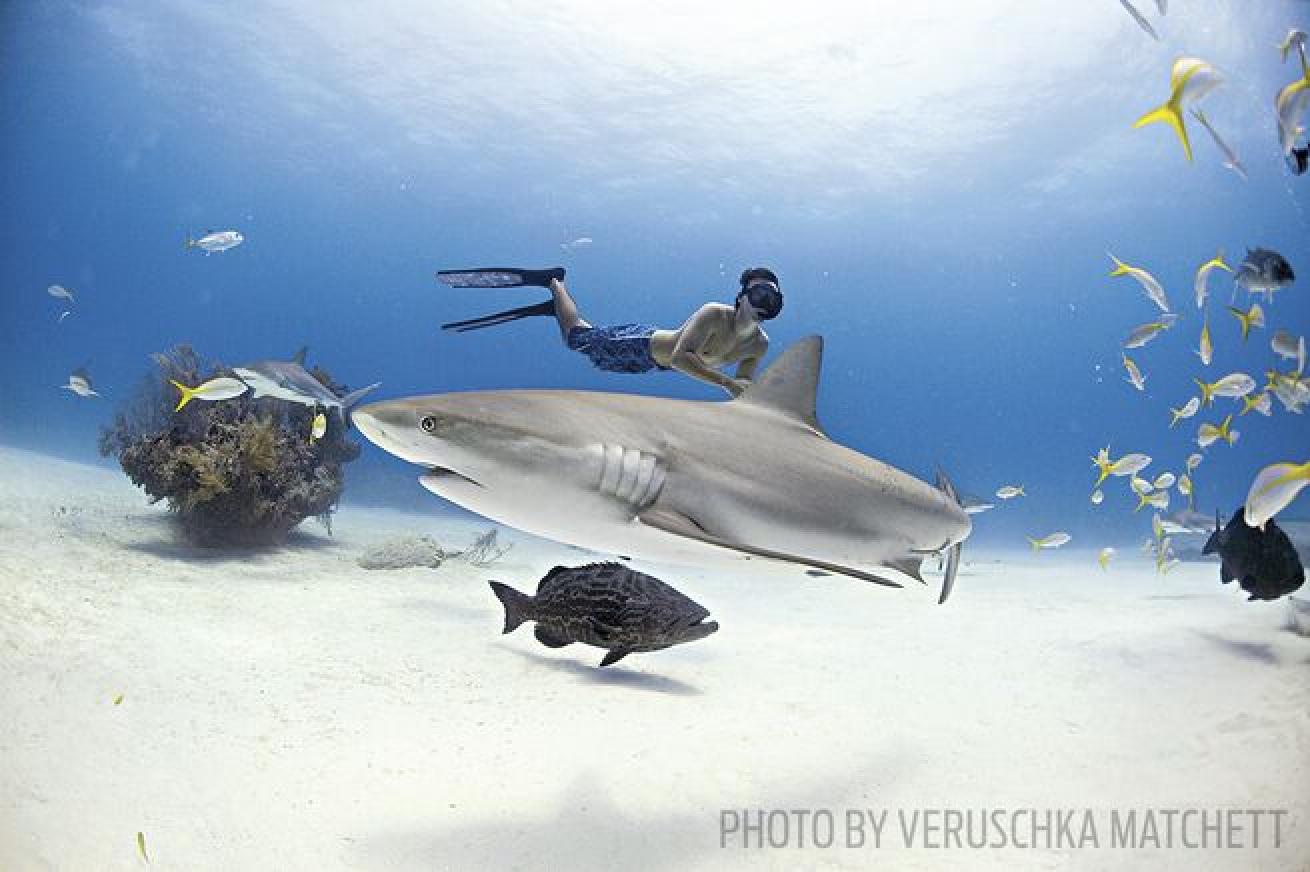Rob Stewart Leaves Strong Legacy After Tragic Death

Richard Sibbald/Courtesy of SharkwaterCanadian filmmaker Rob Stewart’s 2006 film Sharkwater received more than 30 awards worldwide.
It’s a rare soul who can witness the global slaughter and sale of sharks, and not only maintain the determination to keep up the fight to save this greatly misunderstood animal, but to also never deviate from a sense of hope. It was this unflinching expectation for change that led Rob Stewart — the 37-year-old Canadian filmmaker best known for the 2006 movement-sparking, government-policy-changing documentary Sharkwater — to stay committed to the cause. He lost his life in January off the Florida coast while capturing footage of sawfish for what was to be his next film.
“One of the things that everyone who knows Rob knew was that he was a consummate optimist,” says marine conservationist Shawn Heinrichs.
The Emmy award-winning cinematographer first collaborated with Stewart in Kesennuma, Japan, where the pair went undercover, posing as culinary tourists to expose the vast numbers of sharks being decimated.
“We watched and photographed for hours and hours as forklifts of pallets of blue and salmon sharks were carried onto this factory floor several football fields long,” says Heinrichs of the day they saw 7,000 sharks dead in one location. “For all of us there, it cemented the fact that [humans] were wiping out sharks faster than anyone realized. One hundred million sharks killed every year is a gross underestimation.”

Veruschka MatchettRob Stewart freediving with Caribbean reef sharks in the Bahamas
Seeing the heart-wrenching moment bonded the filmmakers, and helped inspire Heinrichs to fight harder.
“No matter how bad it got, or how grim, or how unlikely success was in any of the initiatives he fought for, or how many setbacks were encountered, Rob had this spirit, this ability to just say, ‘Of course we are going to make it happen,’” says Heinrichs.
“The authenticity of Rob’s optimism was so infectious that you wanted to become part of his team.”
Related Reading: Best Destinations to Dive With Big Animals
Stewart went missing Jan. 31 after his third dive of the day off Islamorada in the Florida Keys. He was seen on the surface momentarily after a closed-circuit rebreather dive to about 225 feet on the Queen of Nassau wreck, but vanished under the waves moments later. Dozens of people came to the aid of the U.S. Coast Guard and local rescue team to help find Stewart, serving as search divers, donating boats, and spreading the word on social media. After a four-day search, Stewart’s body was found on the ocean floor, about 300 feet from where he was last seen. The exact details surrounding his death are unknown, and at the time the magazine went to press, a Monroe County, Florida, medical examiner was still conducting an investigation.
There are conservationists all over the world working to make an impact on the public’s perception of sharks, but Stewart’s presence set him apart and helped make the message even more meaningful.
“He was so genuine and so passionate about doing anything he could to shed light on what was happening to sharks,” says conservationist Jillian Morris. “It was contagious.”
And collaboration was what fueled Stewart — not a desire for personal recognition or attention.
Says Heinrichs: “So often with public figures, you think of these outgoing, gregarious people, and Rob could play that role when he wanted, but he was much more quiet and reserved. He was much more interested in listening to what you had to say than having ‘The Rob Show.’ It’s one thing to lead by authority, and another to lead through inspiration. That really set Rob apart.”

Shawn HeinrichsRob Stewart helps spread a message of conservation with schoolchildren in Guam
Stewart’s desire to champion for sharks led him to expose another layer of the epidemic, one he was readying to highlight in his forthcoming film, Sharkwater: Extinction. While examining the number of sharks pulled from oceans each year, Stewart found that 80 million of the 150 million couldn’t be accounted for.
Then he traced these 80 million sharks to the production of cosmetics, including lipstick and moisturizer, as well as pet foods and fast-food sandwiches.
This discovery is what he was on fire about the last time he spoke with Shark Week cinematographer Andy Casagrande.
Related Reading: 7 Liveaboards to Book if You Love to Learn
“He said to me, ‘Imagine if we could show the world that every time they put on makeup, they are actually smearing a multimillion-year-old superpredator on their face, or feeding their house cat a critically endangered species that is paramount to the balance and survival of our oceans,’” says Casagrande.
And showing the world precisely that is the mission that close family and friends — including Casagrande — will take on in completing Sharkwater: Extinction. Hopefully, through the film, Stewart will continue to have the effect that he always had on the people around him.
“His energy was undeniable,” says Heinrichs, who recalls a 2011 trip to Guam with Stewart to help turn the tide in favor of shark-saving legislation. Their mission — along with Shark Savers and the Pew Charitable Trusts — was to rally schoolchildren to encourage the passing of shark-saving legislation. “In the end,” says Heinrichs, “the whole room was so packed with schoolkids that there was little room for the politicians to sit down.”
Adds Heinrichs: “All conservation is setbacks, with fleeting moments of optimism, like that one in Guam. For anyone else, it’s so hard to keep that optimism, but for Rob, it was never anything but a given.”










